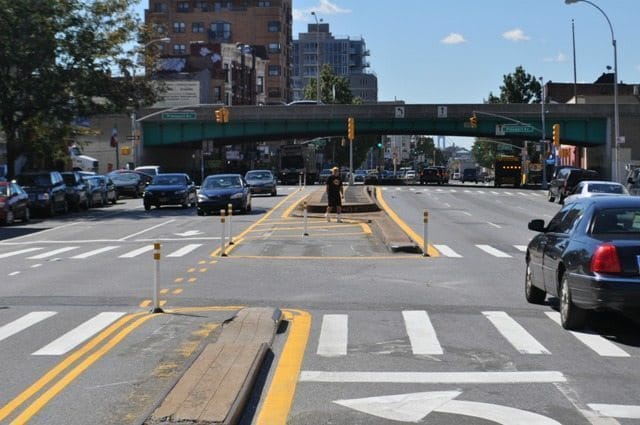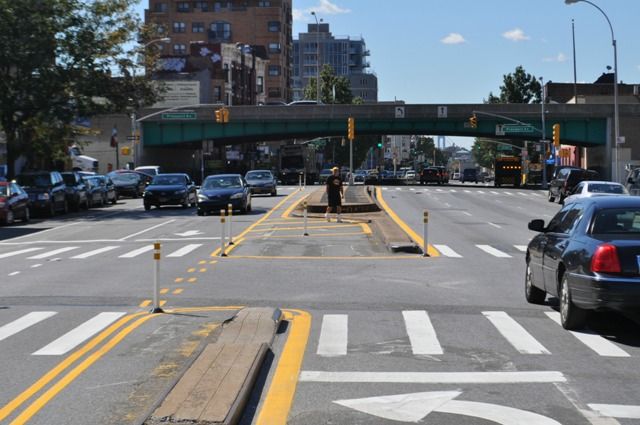Will Upgrades on 4th Avenue Improve Pedestrian Safety?


It’s an inevitable fact of life that, at some point, every New Yorker will become stranded on the median as motorists attempt to break speed records on either side. This predicament can unnerve even then toughest of city folk…especially if the strip of concrete you’re standing on is less than two feet in length.
Welcome to 4th Avenue, ladies and gentlemen, where, according to a recent Eyewitness News report, heavy pedestrian traffic combined with minuscule medians and 1,400 cars an hour equate to one of the top ten most dangerous roads in the city.
Not exactly a top ten we want to be a part of, is it?
Motor vehicle accidents along 4th Avenue have either claimed the lives or injured nearly 100 people since 2006, according to a study by the Department of Transportation.
As a result, safety upgrades between 15th and 65th Streets have begun in the first stage of improvements that will ultimately cover the entire swath of 4th Avenue. DNAinfo outlined the changes last month:
Workers will paint a yellow-lined buffer around thoroughfare’s concrete medians and install narrow white bollards similar to those used in the Brooklyn Battery Tunnel. Traffic will be reduced to two lanes in each direction, and left turns will be prohibited at “pedestrian-heavy” intersections near schools and subway stops.
On weekdays between 7 a.m. and 10 a.m., northbound drivers will be allowed to drive in the parking lane between 38th Street and Prospect Expressway, effectively creating a third lane to accommodate the morning rush hour.
Not mentioned in DNAinfo, but referenced in the DOT’s presentation to Community Board 7, is the addition of truck loading and unloading areas along the avenue.
Will it work, though?
Concerned Citizens of Greenwood Heights founder and Community Board 7 member, Aaron Brashear, is so far “pleasantly surprised” at how the above measures have improved life on 4th Avenue, but he has some concerns.
“Pedestrian plazas will make it safer, but what the heck is this going to do to traffic? We still don’t know how the Barclays Center is going to affect traffic along Fourth,” he told us.
Besides the potential impact of Barclays, regular users will have to adjust to the new street design.
“Increasing the loading and unloading areas has also created a de facto bike lane,” Aaron noted. “How are we now dealing with the interactions between cyclists, cars and pedestrians?”
He’s hopeful though, and he reminds us that neighbors have had a voice in the process.
“We live in an active and well-read community who was very involved with the approval of this project,” he said. “We’ll need to see what happens.”
What do you think, South Slope? Have you noticed any changes along 4th Avenue so far, or does it still feel like you’re involved in some live action version of Frogger?




